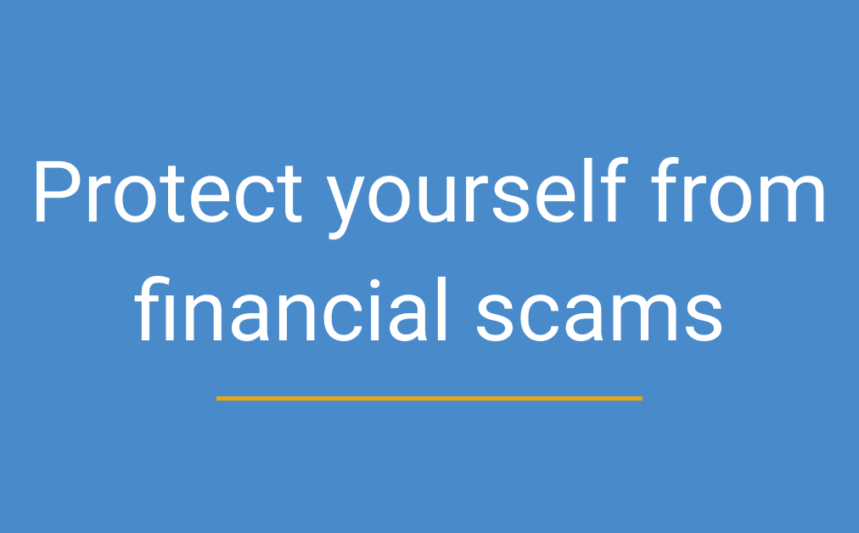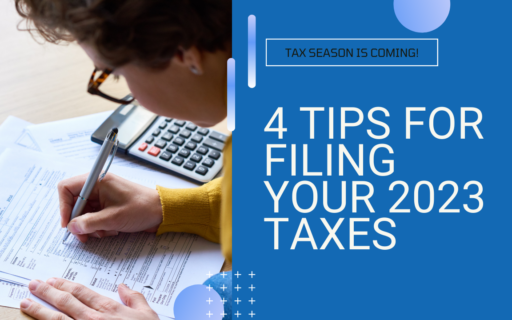We’re seeing and uptick on fraudster activity. Scammers are coming up with ever more creative ways to prey on people, like creating fake online stores, pretending to be someone you know, or tugging at your heartstrings to convince you to send them money.
Your experts at Liberty Bay want to help you protect yourself from this type of fraudulent activity. Read on to learn about:
- Some signs of financial scams
- What you can do to be safe, and
- Signs of good security to look out for
1. Signs of financial scams
Messages you’re not expecting
Scammers can pretty easily fabricate official-looking communications using public information such as a company’s logo or design. They’ll usually tell a story to make it seem like they have a reason to contact you – or even pretend to be a person or company you know. If you receive a message you’re not expecting, make sure to look out for warning signs such as a generic greeting, a suspicious email address, poor grammar or spelling, or overly formal or forced language. Check out the FTC’s overview on recognizing and avoiding phishing scams.
This is especially a problem to look out for if you’ve recently been scammed. Scammers may share your information with other scammers, who will use other methods that may seem completely unrelated to the original scam. Others may intentionally relate their message to your scam – for example, they may claim to be from a federal agency that will investigate your recent scam for a fee. Be especially cautious with the messages you receive and make sure you’re confident that you know the sender before you open links or attachments.
Unusual payment methods
You may be asked to make a payment by purchasing a gift card, sending money through a money transfer company, or depositing a check and then sending them money. These are not secure payment methods and carry huge risks. If a supposed vendor or organization is asking you to pay in an unusual way, this is a red flag for a scam.
It’s a good idea to verify a suspicious request with the person or organization. If it’s a legitimate request, you’re better off safe than sorry – and if it’s not legitimate, you may not only save yourself but many others from being scammed.
Emotional appeal
Scammers will often tell a story that appeals to your emotions to make you vulnerable to giving. Unfortunately, scammers know that people are often in a generous mood during the holidays, and will try to take advantage of you. If you’re being asked to donate to an organization you’ve never heard of, or someone tells you they desperately need money, don’t let your emotions take over. Take some time to investigate and verify their story.
Pressure to act first, think later
Scammers will often put pressure on you to act immediately and trust them. They will use fear tactics such as threats to arrest or sue you, claims that your computer is about to be corrupted or your information leaked, or dissuasions from taking time to research. If you’re being pressured to give someone money without being given the chance to look them up, think about next steps, or contact people who could help you, chances are you’re being scammed.
Information you can’t verify from a Google search
Scammers are usually lying about who they are. This means they’re often using fake ID photos, names, phone numbers, and other details they pretend can help “verify” their identity. They may even go so far as to give you a fake reference number you can call to check their story. When you’re verifying someone’s story, go straight to an Internet search. Do not open any attachments or links they provide you. Make sure to ask yourself: do I know the person or have an account with the company that contacted me?
If the answer is “no,” check for other signs of a scam or Google the information the person provided. Try an image search to see if their photo is real or not, or look for the company’s information online. If you think you’re being scammed, report and delete the message. If the answer is “yes,” contact the person or company in a way you know is real. The phone number they provided may not match the one online or in your records. You can also reach out to them by email or social media.
2. What you can do
As you can see, there are many ways scammers might try to get money or information from you, and there are new scams being created every day. So what can you do to prevent phishing attacks and payment scams, check if you’re being scammed, or do damage control after a scam? Here’s a list of some steps you can take:
- Block unwanted calls and texts. Only people you want to be calling and texting you should be able to do so.
- Create unique usernames and passwords for all your accounts. If one account is compromised, your others will still be safe as long as you have unique information.
- Enable multi-factor authentication. You can set up extra security on some accounts so that you need two or more credentials to log into your account: a passcode via text or an authentication app, a scan of your face or fingerprint, a secret PIN or security question.
- Don’t give out personal information online. Never send someone your credit card, Social Security, or other information via text, email, or other insecure methods.
- Never pay someone with a fishy payment method. If you’re being asked to buy gift cards, use a transfer service, or send money in a suspicious or unusual way, don’t do it.
- Never provide your Social Security number when making online purchases. Simply put, online merchants never need this information to verify a transaction.
- Talk to someone you trust. Getting a second opinion about a potential scam may help you decide if it’s really a problem or not.
- Report scams to the FTC. If you think you or someone you know has been scammed, report it to the FTC immediately and contact anyone else you need to, such as your financial institution.
- Verify information and check for signs of security. Read through some signs that a website is safe to pay through below!
3. Signs of good security
There are many ways to identify scams, but look for signs of good security as well to help prevent fraudulent activity.
When shopping in person:
- Never hand your card to the merchant. Always swipe, insert, or tap your card yourself. Try using cash or prepaid cards to minimize the risk or damage of a scam, or setting limits on your debit card using CardValet to prevent misuse or overuse of your card.
- Be careful where you are keeping your cards and other information. Scammers may use the opportunity of hearing you provide your email address or phone number, watching where you shop, or checking where you keep your valuables.
- Don’t use free, public WiFi. Not only does this make it easier for scammers and hackers to steal your information, they can also create a fake WiFi network and access your device as soon as you connect.
- Only shop from secure websites. The URL should begin with “https”, not just “http”, if it is secure and encrypted. You can also check to see if there is a padlock symbol next to the website address. If you click this symbol, it will tell you more information about the site certificate and security.
- Pay using a credit card if you want more protection on your purchase, or using an online service like PayPal if you want more protection on your bank details.
- Be cautious of unbelievably good deals. While online items are often cheaper than their in-store counterparts, a sale that is too good to be true probably is.
- Check how old a website is. This isn’t always the best indicator of security, as new stores open all the time, and more stores are moving online. However, if a brand-new site has launched just before prime holiday shopping season, it might be a bit suspicious.
- Research the payment gateway the website is using. The online merchant should offer you a payment method that is compliant with the Payment Card Industry Data Security Standards, that tokenizes your data (makes it anonymous so the merchant doesn’t receive your actual payment information), and supports data encryption (the “https” in the URL should indicate this).
- Do a background check on the brand, read their privacy statement, and make sure you know the return and privacy policies. Have other customers had problems with the brand? Is the brand transparent about how your information will be used? The more information you can gather and verify about the merchant, the better.
- Keep an eye on your accounts. If you see any suspicious activity after making an online purchase, alert your financial institution immediately.
Check out these additional resources to learn more about how you can protect yourself from financial fraud:
- Stay a step ahead with our list of the latest and most common scams
- How to recognize & react to a scam call
- How to spot a scam message
At Liberty Bay, we want to help you protect yourself from this type of fraudulent activity. Please reach out to our experts for more information about financial fraud or if you think you may have been scammed.


